The Buzz
Speaking Tour
2016 was quite the whirlwind, with Opticos founder Dan Parolek taking a yearlong, marathon Missing Middle speaking tour that included over two dozen events across the U.S.—from Atlanta to Boston, Washington DC, Chattanooga, Portland, Phoenix, Salt Lake City, and more. The rest of the Opticos crew, including Principals Karen Parolek and Stefan Pellegrini, also helmed Missing Middle conversations at events in Detroit, the San Francisco Bay Area (including for Silicon Valley’s Grand Boulevard Initiative), Sacramento, and Hawai’i.
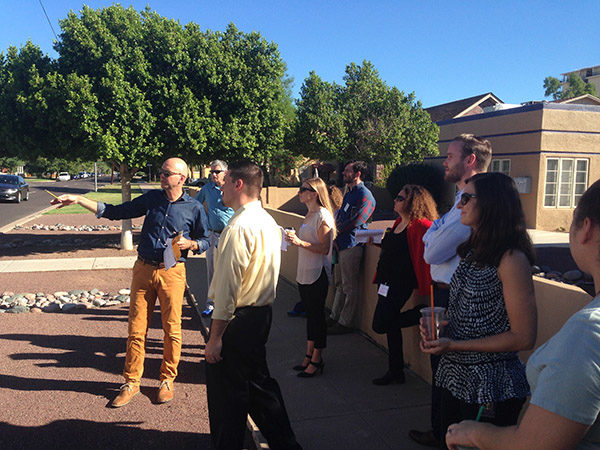
Importantly, Missing Middle Housing is gaining interest or support from major mainstream organizations like AARP, LOCUS, Professional Builder magazine, and ULI. Dan’s work with AARP started last year with a presentation at an annual conference speaking about “Missing Middle Housing and Multi-Generational Communities,” and continued this year with an event in Portland, Oregon—attended by hundreds—that was supported by a broad-based coalition including AARP Oregon, Northwest ULI, and 1,000 Friends of Oregon. AARP has also supported Missing Middle Housing events elsewhere, including California and Iowa. Other speaking events included Professional Builder Magazine’s annual “Housing Giants” conference, and events hosted by The Georgia Conservancy/Atlanta Regional Commission, the American Planning Association, and Smart Growth America. With crowds filling venues, it’s clear that the need for housing solutions is out there and a broad audience is interested.
“Missing Middle Housing provides homebuilders with a practical way to address changing market and demographic trends—diversifying their portfolios and investing in communities in the process. The Missing Middle Housing talk at our Housing Giants conference generated widespread interest and acclaim from our audience of national developers and builders.”
– Amy Albert, Editor-in-Chief, Professional Builder
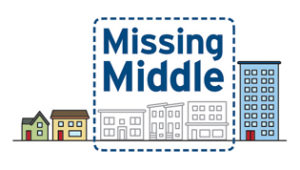
In the Press
On the page, Missing Middle Housing was a topic of discussion across a number of publications this year as well, including On Common Ground, Next City, Professional Builder magazine, and AARP’s Livable Communities site, which featured an interview with Dan, a.k.a. the “Middle Man.”
Planetizen Webinar
This fall, Planetizen launched a Missing Middle Housing online course, bringing the best of Dan’s Missing Middle lectures, walking tours, and in-person courses to the web. Jam-packed with visuals, analysis, and real-world examples, the course is a deep dive into house-scaled, walkable building types for desktops, tablets, or mobile devices.
The Missing Middle Book is Coming
We’re also pleased to announce at this time that Dan and national housing market demand and household demographic expert Chris Nelson are working on Missing Middle Housing: The Book, (working title, of course). We’ll be sure to keep you updated on its progress.
Getting Missing Middle Housing Built
Missing Middle Housing is not just a theoretical concept, and every day we’re seeing more and more evidence of this.
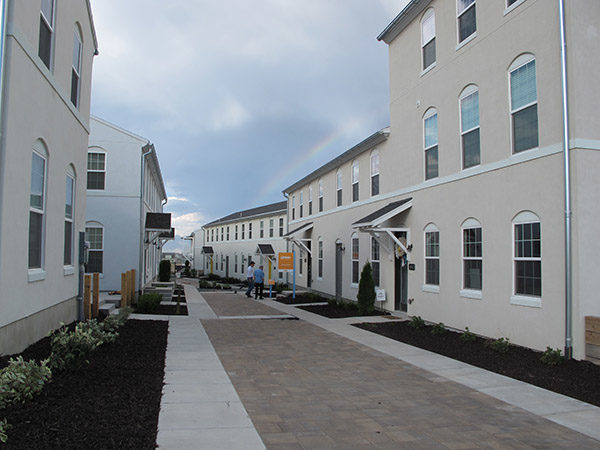
Throughout the year, we’ve been working with developers designing new Missing Middle Housing buildings and master plans. In the Daybreak community in South Jordan, Utah, Phase I construction of a collection of innovative mews houses is complete, and sales are brisk. The homes are a prime example of Opticos working with a historically single-family builder (Holmes Homes) to introduce Missing Middle into its product type portfolio. The units have been such a success that Opticos is now master planning and designing units for Phase II.
Elsewhere, we worked with JBG in the Washington, DC area to propose an (upper) Missing Middle housing design. The concept, based on a flexible “kit of parts” that generates yields of 36 units/acre in a fee-simple townhouse variation, reinforces a high-quality urban environment and high-quality housing.
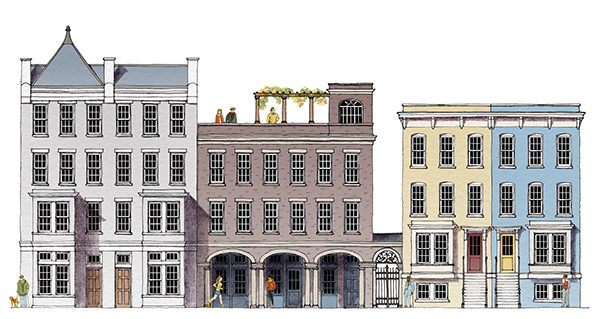
We are also working with Missing Middle Housing at the neighborhood scale, including a new, walkable neighborhood outside of Omaha, Nebraska for Urban Village Development. The plan includes thoughtful incorporation of eight different Missing Middle Housing types, including mansion apartments, small multiplexes, courtyard apartments, mews houses, and live/work units. And there’s more on the boards, too: a bungalow court in Healdsburg, California for Jim Heid of Urban Green and villas in Carlton Landing, Oklahoma for Grant Humphreys.
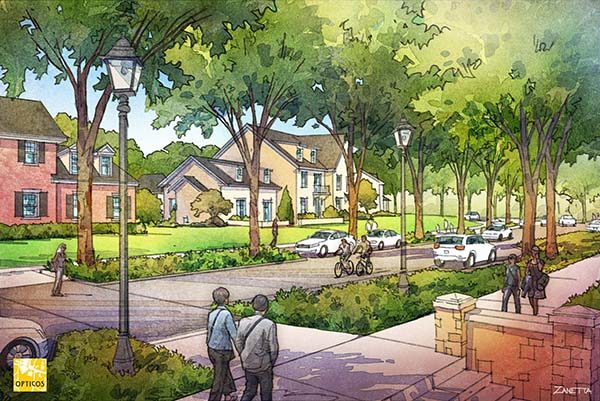
As we highlighted at a panel at CNU.24 in Detroit, getting these types built and sold involves overcoming challenges—some simple, some complex. As experts in these types, we’ve encountered and surmounted a number of these, and are constantly on the lookout for ways to utilize our expertise to help builders get these projects in the ground. Keep an eye out for more updates as these projects evolve.
Removing Regulatory Barriers with Better Zoning
We’ve also seen Missing Middle Housing have a tremendous impact in coding and policy work we have done. For example, in our Doheny Village Form-Based Code in Dana Point, California, a neighborhood charrette led us to examine the introduction of a Missing Middle Housing neighborhood, which was met with applause by the community. In this case and in others, Form-Based Coding is a tool that can support the creation of new—and support existing—Missing Middle Housing.
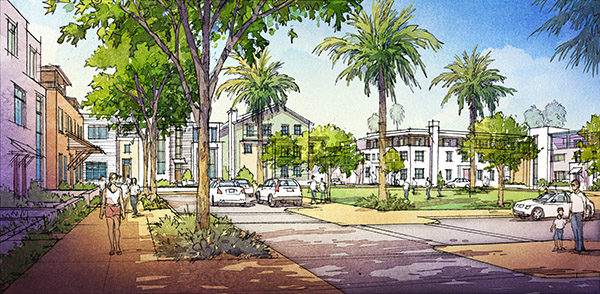
Elsewhere around the country, our work on citywide and neighborhood-scaled plans, studies, and codes has offered us the chance to help reinforce rich, existing Missing Middle Housing fabric in:
- Vallejo, California
- Novato, California
- Oklahoma City, Oklahoma (starting early 2017)
Gaining Steam Nationally and Internationally
As we move forward with new Missing Middle thoughts, designs, and advances, the concept has attracted the attention of other organizations across the nation and internationally and is being adapted to meet local needs. Notably, the Government of New South Wales in Australia has launched a Missing Middle initiative—complete with a design guide and accompanying design competition—to generate conversation on the topic. (Word of advice: We recommend staying away from using the terms “density” and “multi-family” as part of messaging for Missing Middle Housing, because the term can intimidate people and cause an important message to get lost.) Elsewhere, the Incremental Development Alliance, with whom we collaborated at an event Chattanooga, Tennessee, is hosting courses across the country to train aspiring Missing Middle developers. And of course, we are pleased to see other architects and designers foray into the Missing Middle—many, including our colleague Ross Chapin, author of Pocket Neighborhoods, are unveiling new Missing Middle-scale projects nationwide.
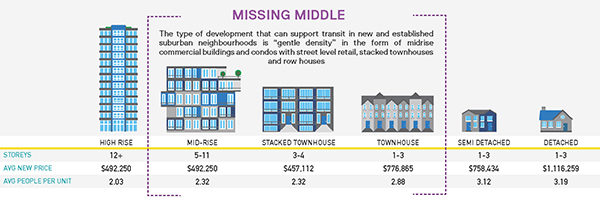
It’s wonderful to see the design ideas generated from the concept, and we look forward to a 2017 full of additional innovations, discussions, and Missing Middle Housing everywhere!